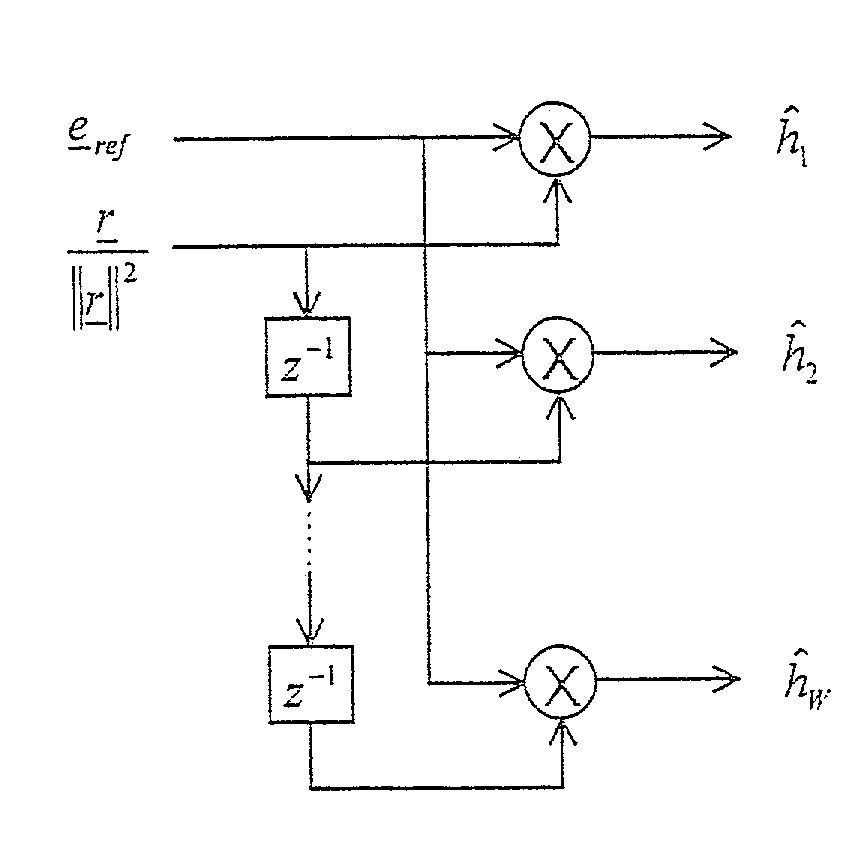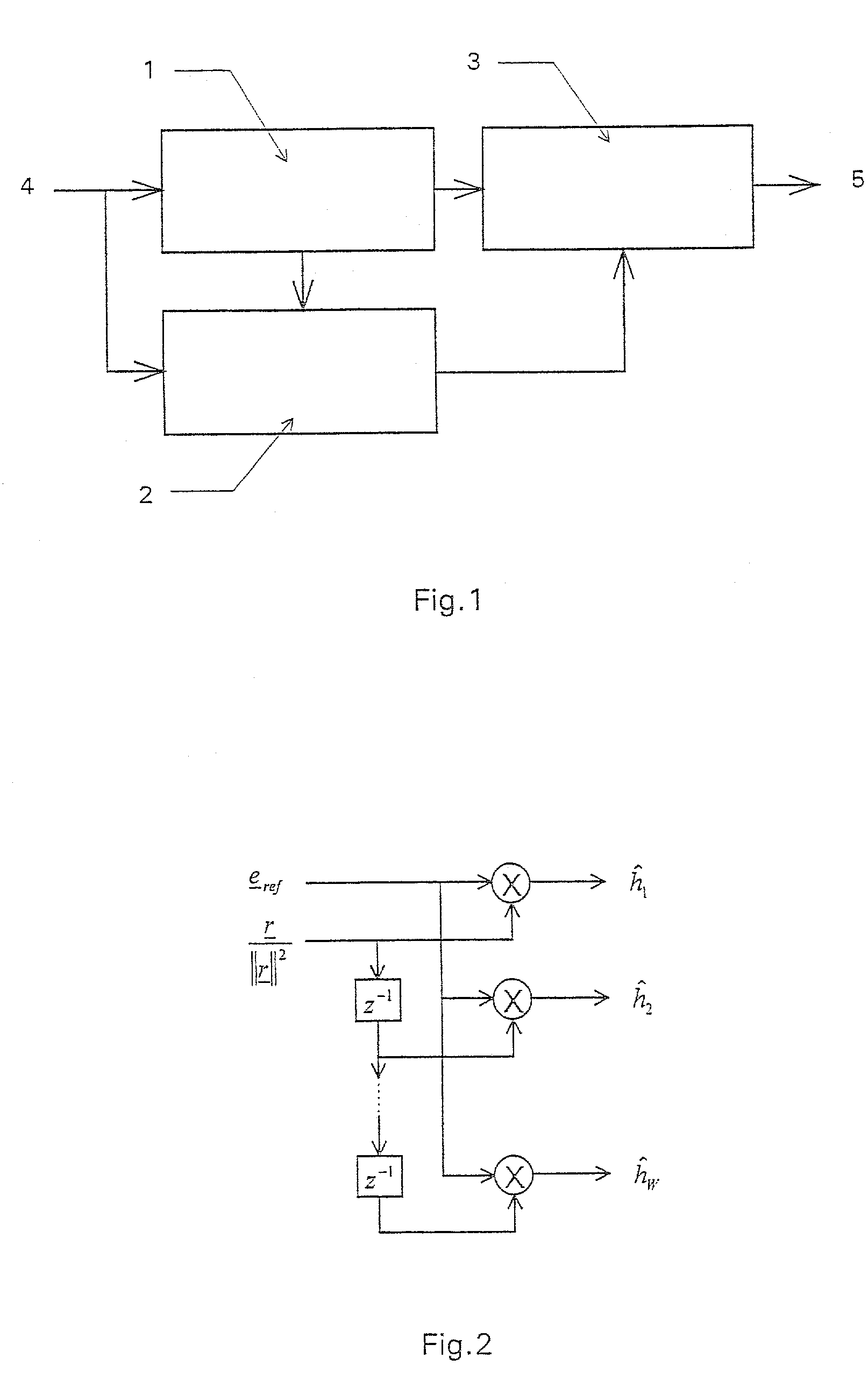Method and device for estimating memory-enabled transmission channels
- Summary
- Abstract
- Description
- Claims
- Application Information
AI Technical Summary
Benefits of technology
Problems solved by technology
Method used
Image
Examples
Embodiment Construction
[0014]FIG. 1 shows a channel estimator 1 as well as a parallelly situated interference estimator 2, both of which receive a received signal 4, and shows a channel estimation correcting element 3, which corrects the signal from channel estimator 1 with the aid of the output signal of interference estimator 2 and outputs channel estimation 5.
[0015]To further clarify the operating mode of the device of the present invention, a discrete-time communications system is given that transmits a reference signal r=(r1, . . . , rL) for purposes of channel estimation. A data signal s=(s1, . . . , sL), whose cross correlation to reference signal r tends to zero, can optionally be transmitted at the same time. This case is representative of CDMA systems, which simultaneously transmit reference information and data information using orthogonal CDMA codes. Power PS of data signal s is f-fold power Pr of reference signal r, i.e., PS=f−Pr. In this context, the state f=0 corresponds to systems that tra...
PUM
 Login to View More
Login to View More Abstract
Description
Claims
Application Information
 Login to View More
Login to View More - R&D
- Intellectual Property
- Life Sciences
- Materials
- Tech Scout
- Unparalleled Data Quality
- Higher Quality Content
- 60% Fewer Hallucinations
Browse by: Latest US Patents, China's latest patents, Technical Efficacy Thesaurus, Application Domain, Technology Topic, Popular Technical Reports.
© 2025 PatSnap. All rights reserved.Legal|Privacy policy|Modern Slavery Act Transparency Statement|Sitemap|About US| Contact US: help@patsnap.com



